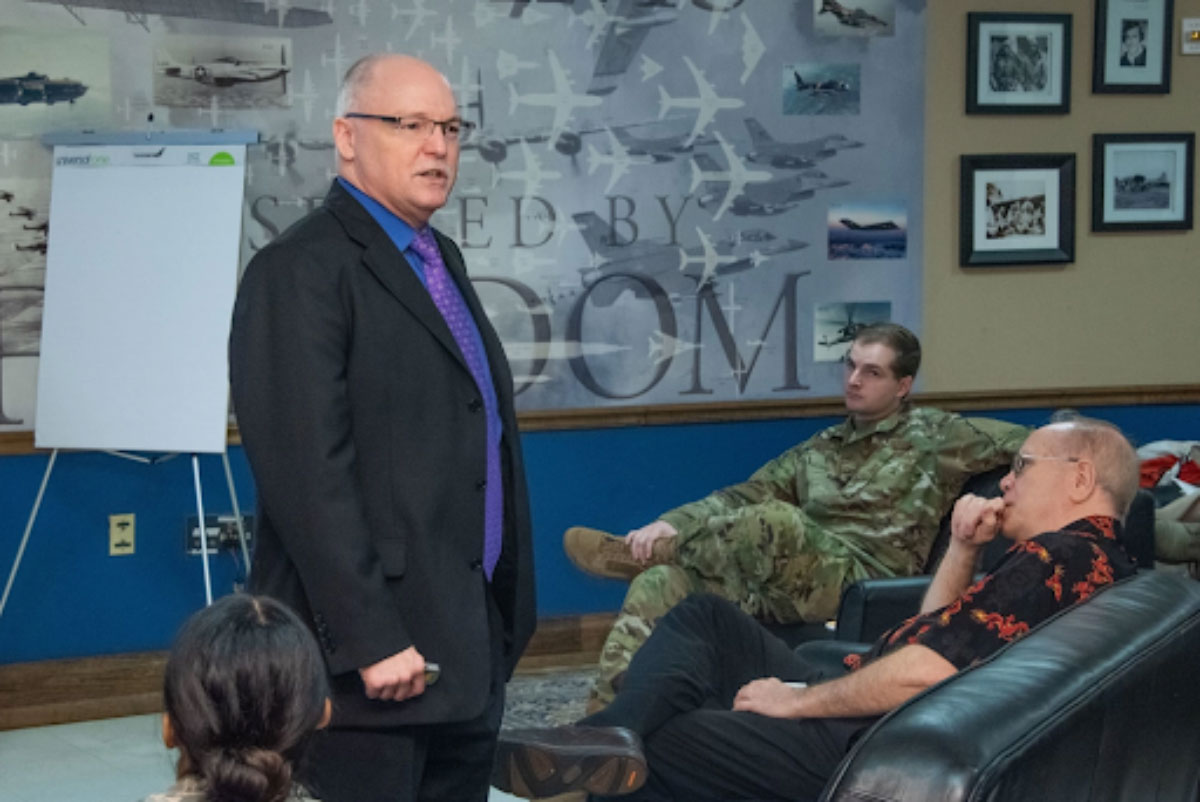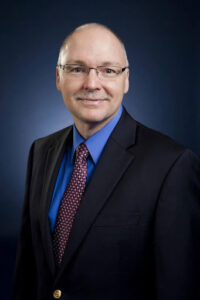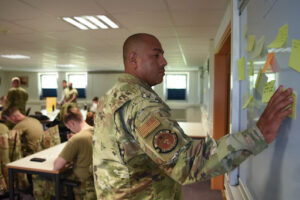From Pizza to Pentagon:
How a Domino’s Executive is Driving Innovation in the Department of Defense
Charting a path to a swift, agile, and creative future with the “Dean of Innovation,” Jeff DeGraff

Jeff DeGraff presents “The Next Idea: Innovation in the New World of Work” during LEDx held at Maxwell Air Force Base, Alabama, April 1, 2019. (U.S. Air Force photo by Trey Ward)
“Innovation is essential: without it, America cannot lead the world.”

How did an executive from Domino’s start a company laying the foundation for an innovative mindset with the Department of Defense?
Dr. Jeff DeGraff, founder of Innovatrium and Clinical Professor of Business Administration at the University of Michigan in Ann Arbor, reflects on his 30+ year career and how his company serves not only military members but the entire country.
“I was a 25-year-old with a PhD, and early in my career, I was brought to Ann Arbor for a technology position with the medical school,” DeGraff said. “I quickly realized the position wasn’t a good fit for me. However, an unexpected turn of events led to an exciting opportunity to work for a visionary in the burgeoning pizza industry. Five years and billions of dollars in sales later, I cashed out as one of the executives of the fastest-growing companies in the 1980s.”
After leaving Domino’s, DeGraff was invited by Professor Robert Quinn to join the faculty of the University of Michigan Business School. There, he taught MBA students how to think creatively, particularly when addressing complex organizational issues. As a pioneer in integrating adaptive thinking techniques into business education, he brought in renowned innovation leaders and initiated remarkable projects. Students learned by working on significant, real-world innovation projects, with guidance from leading experts in the field, like Thomas Zurbuchen, the senior scientist at NASA responsible for the launch of the James Webb Telescope.
DeGraff’s experience in building innovative organizations taught him that facts alone don’t create innovators—experiences do. He sought to establish an innovation institute that would apprentice students and leaders through a “see-one, do-one, teach-one” methodology, similar to medical training. This is where the concept of Innovatrium began to come to fruition.
DeGraff recounted how Mike Gordon, an associate dean at the University of Michigan, recognized his success with multinational companies and organizations. “Mike saw the importance of my approach: a strategic project of real value, a diverse talent pool, a common language, the Competing Values Framework, a method to produce constructive conflict for generative innovation, and the demonstration of tangible results,” DeGraff explained. Together, they visited innovation centers that DeGraff had helped create or admired for their impact.
Inspired, Gordon proposed that the business school fund an innovation center. The dean declined the proposal but encouraged DeGraff to pursue the project independently. “I enlisted my brother John, and we began discussing the idea with several clients,” DeGraff said. “Haworth showed interest and partnered with us to create the first Innovatrium, right across the street from the university.”
He described the transformation of the building: “Housed in a repurposed 1950s photo lab, Haworth replaced the aluminum panels with massive glass panels and furnished the space with writable tables and walls. This innovative design was years ahead of its time,” he said.
DeGraff’s work caught the attention of military leaders, which led Innovatrium to partner with the Department of Defense. “What drives me is the privilege of serving those who serve. This sense of purpose fuels my commitment to advancing this innovation community as long as I can. Innovation in the military is not just about technological advancements; it’s about cultivating a culture of creativity and adaptability, essential for the security and progress of our nation and the world.

Master Sgt. Jesus Munoz, 52nd Fighter Wing Medical Support Squadron Pharmacy flight chief, puts a note with a written response to a prompt on a whiteboard on Spangdahlem Air Base, Germany, July 25, 2022. Attendees were exposed to team exploration of real-world issues and foundational curriculum within the Project Mercury Innovation Workshop. (U.S. Air Force photo by Airman 1st Class Imani West)
DeGraff believes the key to making innovation happen is connecting people who don’t typically interact, such as entrepreneurs, researchers, and those who serve, among others. “Innovators possess a sense of destiny, striving to make their world better and new. When America shares this sense of destiny, we achieve great things. Without it, we splinter into small, quarreling factions that accomplish very little. By introducing a shared language, such as the Competing Values Framework, also known as the Innovation Code, we can generate infinite variations of ideas while still understanding each other. It’s like learning to read a map, guiding us towards collective innovation.”
The importance of innovation in force preparedness is well recognized by leaders in the Department of Defense. Recently retired Lt. Gen. S. Clinton Hinote, who last served as the Deputy Chief of Staff for Air Force Futures, emphasized the critical nature of mission readiness during a jumpstart event for one of Innovatrium’s recent cohorts. “Practicing innovation, networking, and developing the necessary skills will expand our options and enhance our readiness. If and when conflict arises, we’ll need leaders who can quickly adapt and lead teams to implement substantial, necessary changes.”
DeGraff partners with the military to cultivate leaders who are agile, adaptable, and effective in the field. He understands his role in developing military leaders who will create and sustain innovation on a large scale, ensuring its essential role in the defense of our nation and our allies.
Innovatrium offers three robust innovation programs within an ecosystem known as the Intellectual Edge Alliance (IEA), each tailored to a different audience with a unique curriculum and methodology. These programs—Project Mercury, Academia Industry Military-Hybrid Innovation (AIM-HI), and the Chief of Staff of the Air Force Innovation Leadership Seminar (CHILS)—are designed to help warfighters develop and sustain agile and adaptive mindsets.
Intellectual Edge Alliance Director Col. Johnny Barnes (Ret) has been a supporter and participant of the IEA in and out of uniform. Barnes described how beneficial the IEA is for the DOD, “The goal of the program is cognitive flexibility, cognitive adaptability. And in doing so, we get a lot of good outputs that are real program changes, and you get better efficiency, or you get something that pushes the thinking further.”
DeGraff believes that structuring various innovation processes, procedures, and techniques lays the groundwork for fostering innovation, providing master innovators with essential starting points.
“When people have different ideas, two outcomes are possible: they can either become divided, or their ideas can merge to create hybrids, leading to better and new ways of doing things. Although not everything works perfectly the first time, we excel at innovation through the iterative process that shapes and refines our ideas. Our proficiency stems, in part, from this constructive form of conflict, which encourages diverse perspectives to converge and evolve into innovative solutions.”
When asked about the future of Innovatrium, DeGraff is focused on expanding its reach within the U.S. and with our allies in NATO, as well as engaging top tech companies and research universities.
To build a scalable and sustainable innovation ecosystem, Innovatrium develops leaders at three levels, much like a university with students, graduate students, and professors. “Participants advance from one level to the next, with the upper levels teaching and mentoring the levels below. The three levels of programs are: 1.) How to be on a team, which includes many participants; 2.) How to lead a team, which is more selective; and 3.) How to build an organization, which is highly elite.”
“Due to the extensive effort required to develop a master innovator—someone capable of fostering dozens of innovators and building grassroots innovation communities with the necessary culture and competencies—I focus on leaders who have demonstrated a passion and aptitude for driving innovation,” he said. “What we’re doing is creating a self-sustaining, dynastic organization. We need to compete on innovation because our peer adversary has an advantage of numbers. It is our way of thinking, our adaptive school of thought, that will decide the winners and losers in a world where everyone has comparable technology.”
According to DeGraff, cultivating an innovative mindset requires both time and practice. However, new ideas often struggle to take hold because existing ideas are deeply entrenched. “The more somebody fights a change or an innovation, the more they believe they’re protecting something sacred,” DeGraff says. The biggest challenge is understanding the situation and correctly identifying the right problem. “To develop an adaptive mindset, you must begin by breaking down and challenging people’s existing thought processes.”
DeGraff emphasizes the importance of situational awareness—understanding what we are looking at is the hardest part. “No one changes simply because of compelling ideas; instead, it’s about gradually breaking down their existing thoughts to foster self-awareness and a higher perspective. Innovation is a skill like any other. Equally important is the ability to take different views and situational assessments and create constructive conflict, which is key to fostering innovation.”
DeGraff said his objective for Innovatrium is to develop innovation leaders who can build diverse, scalable capabilities, unique cultures, competencies, and communities.
“My goal is straightforward: to ensure the United States military has leaders capable of adapting to any situation,” he explained. “The best way to teach people how to be innovators is by putting them in a situation where they must be an innovator. We learn by doing. This is the essence of tradecraft: the ‘see-one, do-one, teach-one’ approach to mastery. In addition, to be adaptable in large groups and rapidly changing situations, a common language is essential. That’s where the Competing Values Framework comes in. Sometimes called the Innovation Code or the Innovation Genome, it provides an easy way for people to express complex ideas quickly and establish shared meaning.”
DeGraff is passionate about Innovatrium’s innovation leadership programs, which aim to increase the number of innovators within the military.
“Some of the projects that emerge from our programs are major successes, garnering congressional support. While that’s gratifying, the true value lies in developing hundreds of highly skilled innovators who can transform their own units and significantly enhance their readiness.”
In addition to the original Innovatrium location in Ann Arbor, Michigan, and their affiliations in places like Singapore and Warsaw, Innovatrium will expand to San Antonio in the coming months and is currently exploring the possibility of establishing additional innovation centers.
For more information about Jeff DeGraff or Innovatrium, please visit jeffdegraff.com or innovatrium.org.
About Jeff DeGraff
Dr. Jeff DeGraff is an advisor to Fortune 500 companies, a top innovation speaker, a business professor at the Ross School of Business at the University of Michigan, and a bestselling author. He founded the Innovatrium, an innovation consulting firm focusing on creating innovation culture, capability, and community where he offers three kinds of coaching services: Executive Coaching, Innovation Project Coaching, and Personal Development Coaching. He earned his nickname, the “Dean of Innovation,” while working as an executive for Domino’s Pizza in his youth, where he accelerated Domino’s growth from a regional success story to an international franchise phenomenon. He is also the author of several books on how teams innovate, his most recent, The Art of Change: Transforming Paradoxes into Breakthroughs, will be published in April 2025.
About Innovatrium
Innovatrium aims to develop the organizational culture, competency, and community needed to manage and lead innovation, fostering growth in innovation ecosystems. Innovatrium has worked with Fortune 500 companies (Apple, Google, Pepsi, etc.), community leaders, and governmental agencies including the Department of the Air Force (DAF). In partnership with the DAF, Innovatrium has supported the innovation and adaptive mindset training of over 400 graduates within their Intellectual Edge Alliance programs: For more information, visit: innovatrium.org.



